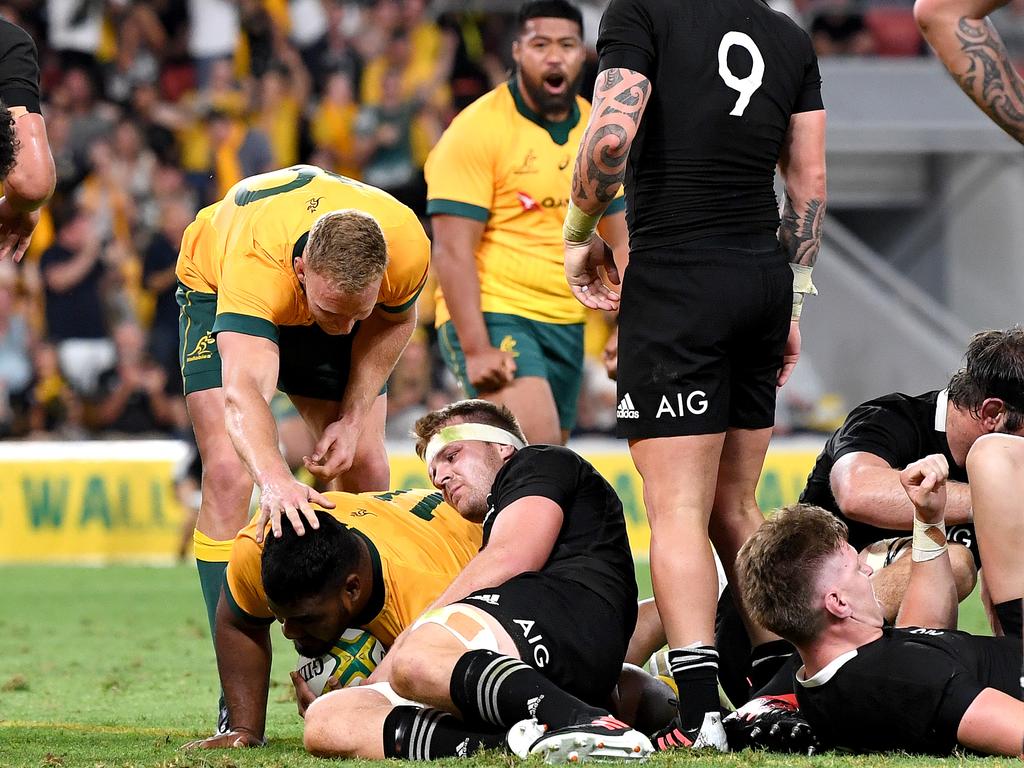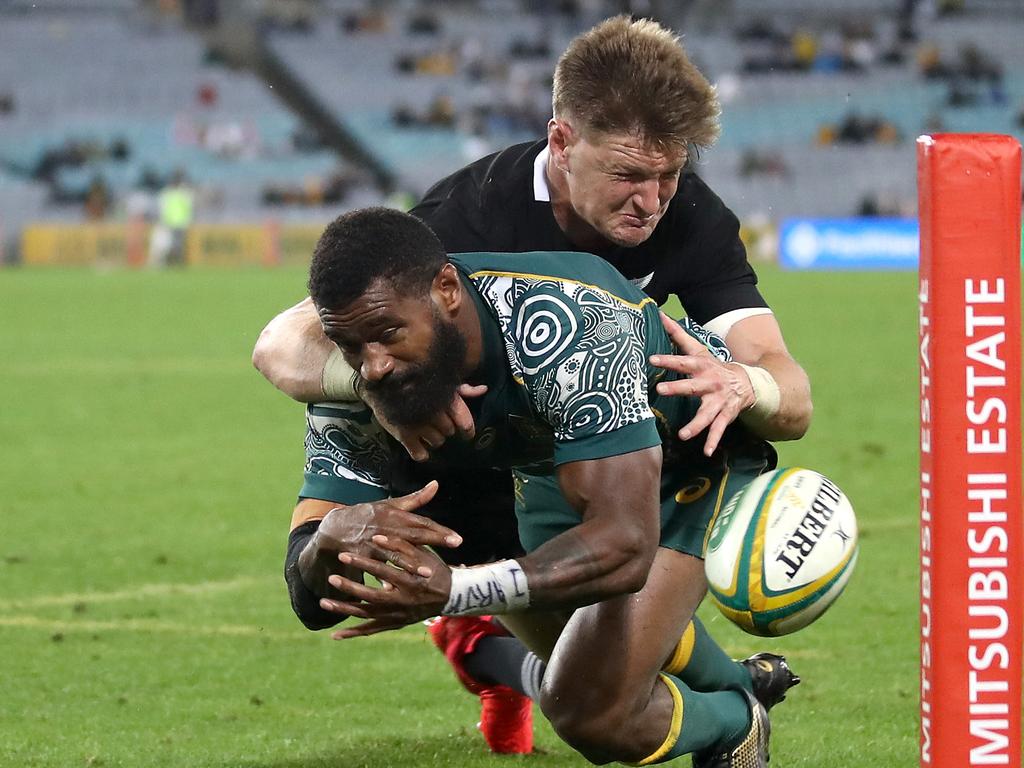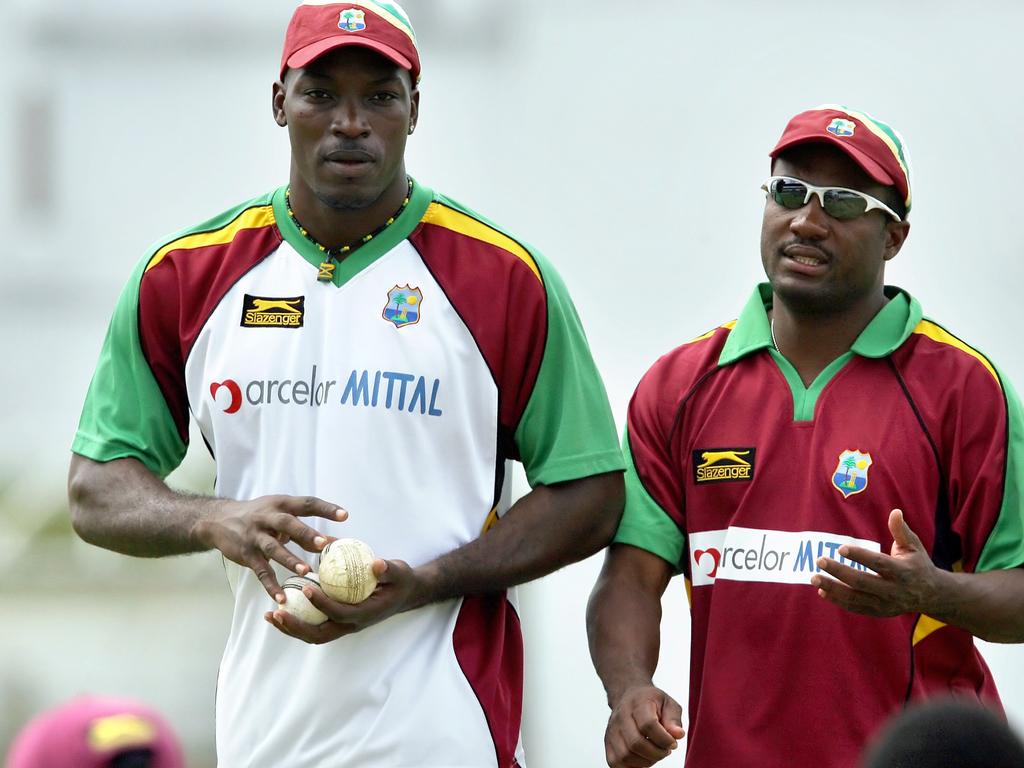Game pays too high a price for head hunters
World Rugby’s zero tolerance punishment for head-high tackles risks alienating fans.

In the final analysis, there were only 12 minutes of play from when the All Blacks went down a man, following Ofa Tu’ungafasi’s high shot on Tom Wright, to Swinton’s near-identical tackle on Sam Whitelock. And in that brief period, the All Blacks improved their score from 8-5 to 8-8, thanks to some Australian inaccuracy as they attempted to take advantage of their extra man.
As Wallabies coach Dave Rennie remarked, Swinton was certainly making a statement in defence on his first appearance on the international stage. The All Blacks were definitely looking for him whenever they carried the ball which may account for some uncharacteristic sloppiness from them at times.
All the evidence to date is that Rennie is in the process of building a formidable side, and these days no side can be regarded as formidable which cannot control its own behaviour. “We don’t train to tackle around the head,” said captain Michael Hooper. So, on this occasion, Swinton stepped outside the game plan and while it is an extremely high price to pay, he can have no complaints about missing more than 45 minutes of his debut Test and, if found guilty, whatever other sanction SANZAAR imposes. And it is a similar situation for Tu’ungafasi.
While All Blacks coach Ian Foster commented on the fact that there seemed to be “a lot of voices in people’s ears”, it seemed that referee Nic Berry did arrive at the correct decision with his television match official, Paul Williams. And certainly once that standard was applied to Tu’ungafasi, there was never any hope that Swinton would be dealt with any differently. Red cards all around.
But while the match officials may have even-handedly applied the law – irrespective of whether the victims of either tackle required a head injury assessment – doesn’t mean that the law itself is not an ass. Or more correctly, not the law so much as the immediate penalty.
Rugby, particularly Test match rugby, is a game designed to be played with 15 people. Reduce the game to 14 men and it gets thrown into chaos. All Black captain Sam Cane made a very valid observation when he said that losing a player takes a captain’s mind off the game plan and instead onto ways of plugging the gap. When even Anton Lienert-Brown looked all at sea having to fill in at flanker at one scrum following the juggling that Tu’ungafasi’s dismissal caused, it starts to become very just how disruptive a red card can be.
Spare a thought, in particular, for All Black blindside flanker Akira Ioane who was forced to pay the price of Tu’ungafasi’s careless tackle. Like Swinton, he was making his Test debut but unlike Swinton, he wasn’t guilty of making a high shot. But because the teammate who did was the tighthead, the first time a scrum was set following his dismissal, Ioane was called to the sideline, his night over, because the All Blacks needed to send on a replacement prop.
World Rugby’s blitz on high shots isn’t going to ease any time soon. Indeed, it is now a permanent part of the game. The trouble is, though, that the scorched earth approach to dealing with head-high tackles will eventually drive spectators away because no-one wants to see a contest distorted by having one team playing with 15 men and the other with 14. That’s why, in a perverse way, it was good to have the game play out with 14 on 14.
For starters, it removes the asterisk that are attached to results like this one or the Wallabies 46-27 victory over the All Blacks in Perth last year … the asterisk signifying that NZ played more than half the match with only 14 men after Scott Barrett crunched Michael Hooper right on the nose.
Greg Martin’s observation on the Fox Sports commentary that disrupting a game with a send-off is only going to anger and confuse the many rugby league fans in the crowd, while entirely valid, won’t carry any weight. As far as World Rugby is concerned, modifying the rules to suit the devotees of another game simply makes no sense. Rugby has decided that is the penalty for a high tackle and if rugby league chooses to do otherwise, then that is its business. And guess which rugby code is more likely to cop the class action because of its failure to protect the health and safety of its players?
No, the law doesn’t need to be changed but the penalties do. The sensible proposal is to send off the offender, wait an appropriate time to act as a sanction, and then send a replacement on to fill the gap. Determining what is “an appropriate time” is the tricky part. If, as some suggest, it is 15 minutes, particularly against a side as potent as the All Blacks, then the game is probably as good over anyway.
Making it 10 minutes would put in on par with a yellow card, except for the critical distinction that under a yellow card, the miscreant can return to the play. Under a red card, he would have to miss the remainder of the match and then face the judiciary – as Tu’ungafasi and Swinton will do on Monday. But his teammates and spectators would not suffer from a game that had suddenly become one-sided. And unfair practices like the one which forced the All Blacks to pull Ioane out of the Test for something that wasn’t his fault would end.
The All Blacks generously acknowledged that they had been outplayed and outsmarted by the Wallabies on Saturday night. I very much doubt they would have been so liberal with their praise had they been forced to play against 15 Wallabies for the final 57min 38sec if Tu’ungafasi was the only one red carded.
There are common sense solutions available to this problem. By pure chance, Bledisloe IV quickly evened itself out but it’s a rare Test indeed in which this happens.
Changing some laws would completely alter the fabric of the game. But a match needn’t be ruined for players and spectators simply because one player has a brain explosion.







“Both teams got dealt pretty much with the same cards,” said All Blacks coach Ian Foster, surprising himself with his unintended play-on-words. Unless you happen to be Lachie Swinton, it was no bad thing that Australian and New Zealand both were reduced to 14 men on Saturday night.